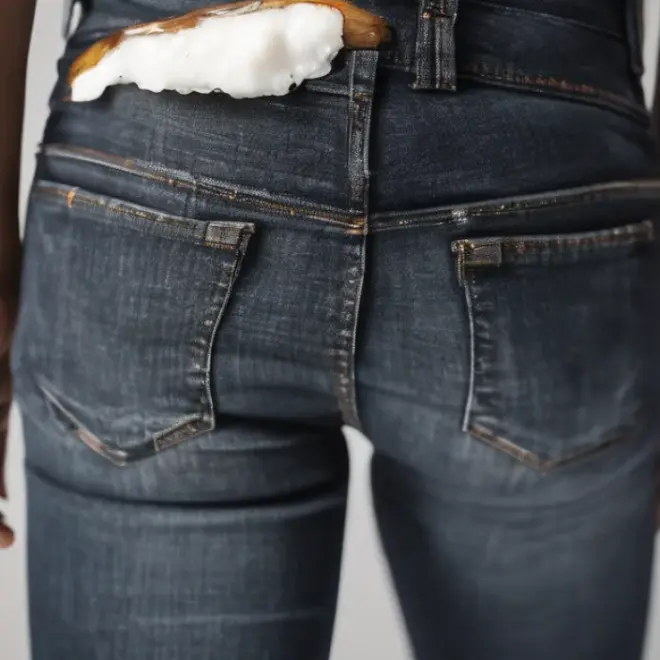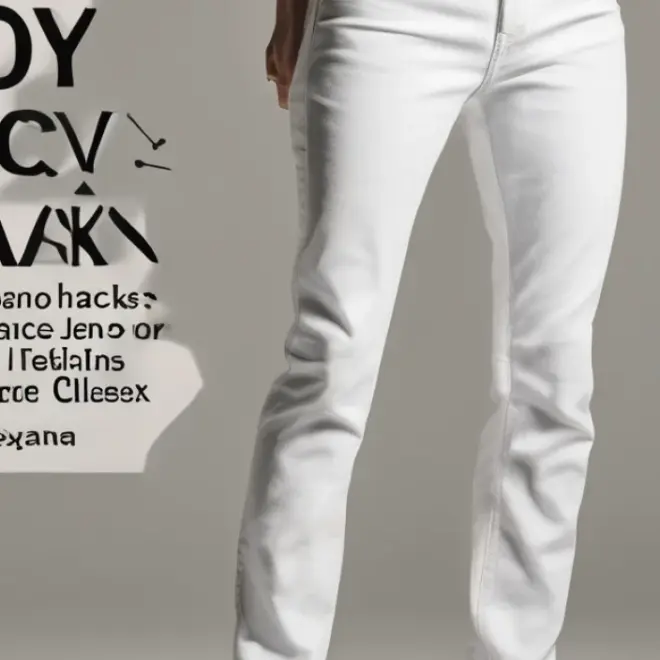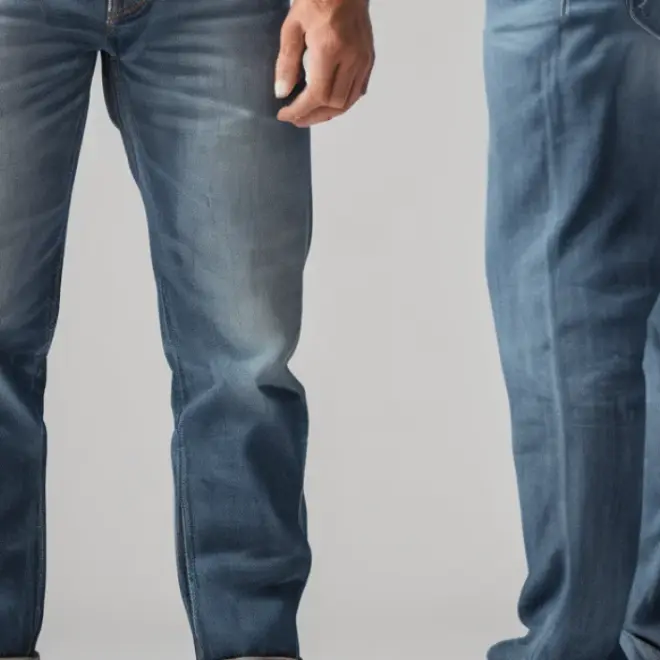Worried about coffee stains on your favorite jeans? Don’t be! This guide shows you simple, effective ways to remove coffee stains from your denim, even light washes, keeping your jeans looking great with easy-to-follow steps and common household items.
How to Remove Coffee Stains from Jeans: Proven Savior for Your Denim
Ah, the morning ritual. A warm cup of coffee, a moment of peace… until a rogue splash lands right on your favorite pair of jeans. It’s a universally frustrating moment, especially when those jeans are a pair of stylish light-wash denim that seems to show every single speck. But before you resign yourself to a stained fate, know this: coffee stains are surprisingly beatable. With the right approach, you can rescue your jeans and restore them to their former glory.
This guide is here to walk you through the process, step-by-step. We’ll cover everything from immediate treatments to tackling stubborn, set-in stains. You don’t need fancy chemicals or dry cleaning. In fact, most of what you need is likely already in your home. Let’s dive in and make those coffee mishaps a thing of the past!
Why Coffee Stains Are Tricky (and How to Beat Them)

Coffee, especially dark roast, contains natural pigments and tannins. These compounds are what give coffee its rich color and flavor, but they can also bond with fabric fibers, making them appear stubborn. The longer a coffee stain sits on your jeans, the deeper it can penetrate the denim, making it harder to remove. Light-wash jeans are particularly susceptible because the lighter dye offers less camouflage for the stain. However, denim is a sturdy fabric, and with prompt action and the right techniques, these stains can be effectively lifted without damaging the material.
The Golden Rule: Act Fast!

The absolute best way to ensure a coffee stain doesn’t become a permanent fixture on your jeans is to treat it as quickly as possible. Fresh stains are a dream compared to dried-on ones. If you spill, don’t just leave it there while you finish your coffee or your day. Grab a paper towel or a clean cloth and blot the area immediately. Blotting—not rubbing—is key. Rubbing can spread the stain and push it deeper into the fabric fibers.
Essential Tools & Supplies for Coffee Stain Removal

Before we get into the methods, let’s gather your stain-fighting arsenal. Most of these are common household items:
- Clean white cloths or paper towels
- Cold water
- Mild liquid laundry detergent
- White vinegar
- Baking soda
- Dish soap (a gentle, dye-free one is best)
- Optional: Oxygen-based cleaner (like OxiClean)
Always use cold water when treating coffee stains, as hot water can set the stain, making it much more difficult to remove. White cloths are recommended so you don’t transfer color onto your jeans.
Method 1: The Immediate Blot and Rinse Technique (For Fresh Stains)

This is your first line of defense and often all you need for a fresh spill.
- Blot Safely: As soon as the spill happens, grab a clean white cloth or paper towel. Gently blot the stained area from the outside in. Continue blotting with clean sections of the cloth to absorb as much liquid as possible. Avoid rubbing, which can spread the stain.
- Rinse with Cold Water: Turn the jeans inside out and hold the stained area under a stream of cold running water. Flush the stain from the back of the fabric. This helps push the coffee out of the fibers.
- Apply Detergent: If the stain persists, gently rub a small amount of mild liquid laundry detergent directly into the remaining stain. Let it sit for about 5-10 minutes.
- Rinse Again: Rinse the area thoroughly with cold water.
- Check and Repeat: Inspect the stain. If it’s gone, proceed to wash your jeans as usual. If a faint mark remains, repeat steps 3-5 or move on to a more intensive method.
Method 2: The Detergent and Water Paste (For Slightly Set Stains)

If the immediate rinse didn’t fully remove the stain, or if it’s been a short while, this method can be very effective.
- Mix the Paste: In a small bowl, mix a tablespoon of mild liquid laundry detergent with enough cool water to create a thick paste.
- Apply the Paste: Gently apply the paste directly onto the coffee stain, ensuring it’s fully covered.
- Let it Work: Allow the paste to sit on the stain for 15-30 minutes. This gives the detergent time to break down the coffee compounds.
- Gently Agitate: Using a soft-bristled brush (like an old toothbrush) or your fingers, gently work the paste into the stain.
- Rinse Thoroughly: Rinse the area completely with cold water.
- Wash as Normal: Once the stain appears lifted, wash your jeans in cold water with your regular detergent.
Method 3: Harnessing the Power of Vinegar and Baking Soda
Vinegar is a natural mild acid that can help break down stains, while baking soda is a gentle abrasive and odor absorber.
Option A: White Vinegar Soak
- Prepare the Soak: Mix one part white vinegar with two parts cool water in a basin or sink.
- Submerge the Jeans: Submerge the stained portion of your jeans in the vinegar-water solution. Ensure the stain is fully immersed.
- Soak Time: Let the jeans soak for about 30 minutes.
- Rinse and Wash: Remove the jeans from the solution, rinse thoroughly with cold water, and then wash as usual.
Option B: Baking Soda Paste
- Make the Paste: Mix baking soda with a small amount of cool water to form a thick paste.
- Apply to Stain: Apply the paste generously over the coffee stain.
- Let it Dry: Allow the paste to dry completely on the fabric. This can take a few hours.
- Brush Off: Once dry, gently brush off the dried baking soda.
- Rinse and Wash: Rinse the area thoroughly with cold water and then wash your jeans as you normally would.
Method 4: Dish Soap for Stubborn Spots
Dish soap is designed to cut through grease and food particles, and it can be surprisingly effective on coffee because it helps to break down the oils and pigments in the coffee.
- Apply Dish Soap: Apply a few drops of mild, clear dish soap directly to the stain.
- Work it In: Gently rub the dish soap into the stain with your fingers or a soft cloth.
- Let it Sit: Allow the dish soap to sit on the stain for about 10-15 minutes.
- Rinse: Rinse the area thoroughly with cold water.
- Wash: Launder the jeans as usual in cold water.
Method 5: The Oxygen-Based Cleaner Boost
For those really tough, set-in stains, an oxygen-based cleaner can be a lifesaver. These cleaners are generally color-safe for most fabrics, but always test in an inconspicuous area first.
According to the U.S. Environmental Protection Agency (EPA), products that use oxygen bleach (like sodium percarbonate, the active ingredient in many oxygen cleaners) are often considered more environmentally friendly alternatives to chlorine bleach because they break down into oxygen, water, and minerals.
- Prepare the Solution: Follow the manufacturer’s instructions for your chosen oxygen cleaner. Typically, you’ll dissolve a scoop of powder in a bucket or sink full of cool water.
- Soak the Jeans: Submerge the coffee-stained jeans in the solution, ensuring the stained area is fully covered.
- Soak Duration: Let the jeans soak for at least 1-6 hours, or even overnight for very stubborn stains. Check periodically.
- Rinse and Wash: After soaking, rinse the jeans thoroughly with cold water and then wash them in your washing machine on a normal cycle with your regular detergent.
Tackling Set-In Coffee Stains: A Game Plan
Set-in stains are harder, but not impossible. The key is patience and persistence. You might need to try a combination of methods. Here’s a strategy:
- Pre-treat: Start with a strong pre-treatment. Try the dish soap method first, followed by a detergent paste.
- Soak: For stubborn stains that remain after pre-treatment, move to an overnight soak with an oxygen-based cleaner.
- Gentle Scrubbing: After soaking, gently rub the stained area with a soft brush or cloth to help lift any remaining pigment.
- Wash: Wash on the warmest water setting that is still safe for your jeans (check the care label).
- Air Dry: Crucially, do not put the jeans in the dryer until you are certain the stain is completely gone. The heat of the dryer will permanently set any remaining stain. Air dry them instead and inspect in daylight. If the stain is still there, repeat the process or try a different method.
Special Considerations for Light Wash Jeans
As mentioned, light wash jeans can be more unforgiving. While the methods above are generally safe, here are a few extra tips:
- Avoid Harsh Rubbing: Aggressive scrubbing can damage the fibers or the dye in light-wash denim, leading to lighter patches or a faded appearance where you scrubbed. Be gentle.
- Test First: If using any commercial stain remover or oxygen cleaner, always test it on an inside seam or a hidden area of the jeans first to ensure it doesn’t cause discoloration.
- Stick to White/Clear Products: Use white cloths and avoid colored soaps or detergents that could transfer color onto your light denim.
- Vinegar is Your Friend: White vinegar is particularly well-suited for light colors and often has a less harsh effect compared to some chemical removers.
What NOT to Do When Removing Coffee Stains
There are a few common mistakes that can make stain removal harder:
- Don’t use hot water: Hot water can cook the stain into the fabric. Always start with cold.
- Don’t rub vigorously: This can spread the stain and damage the fabric. Blot instead.
- Don’t put stained jeans in the dryer: Heat sets stains permanently. Air dry until you’re sure the stain is gone.
- Don’t use chlorine bleach on denim unless you want to lighten or bleach the area extensively: Chlorine bleach can destroy denim fibers and cause significant color loss, often unevenly.
Preventative Measures: Coffee Spill Savvy
While accidents happen, here are a few ways to minimize the risk:
- Use a Travel Mug with a Secure Lid: This is the most obvious and effective way to prevent spills while on the go.
- Keep Coffee Away from Your Wardrobe: Designate a “no-coffee” zone for your favorite outfits.
- Wear an Apron: If you’re a coffee lover who enjoys brewing at home or engaging in messy kitchen activities, an apron is a simple yet effective barrier.
A Comparison of Stain Removal Methods
Here’s a quick look at different approaches and their suitability:
| Method | Best For | Pros | Cons |
|---|---|---|---|
| Immediate Blot & Rinse | Fresh spills | Fast, uses minimal supplies | May not be enough for deep stains |
| Detergent Paste | Slightly set stains | Breaks down stain components effectively | Requires a bit more time |
| White Vinegar Soak | Moderate stains, light colors | Natural stain remover, color-safe | Vinegar smell (washes out) |
| Baking Soda Paste | Light to moderate stains | Gentle abrasive, odor absorber | May require multiple applications |
| Dish Soap | Stubborn spots | Cuts through coffee pigments | Ensure it’s a mild, clear soap |
| Oxygen-Based Cleaner | Set-in, old stains | Powerful stain lifting, color-safe | Requires soaking time, may need testing |
Frequently Asked Questions about Coffee Stains on Jeans
Can I remove a coffee stain that has been in the dryer?
It’s significantly harder, but not always impossible. The heat from the dryer sets stains. Try soaking in an oxygen-based cleaner overnight, then pre-treating with a strong detergent or dish soap solution before washing again on a warm (but safe for denim) cycle. Air dry and repeat if necessary. Success is not guaranteed.
Will these methods damage my light wash jeans?
The methods described, particularly those using mild detergent, vinegar, and baking soda, are generally safe for most denim, including light washes, as long as you avoid harsh scrubbing and excessive heat. Always test any new product on an inconspicuous area first.
How long should I soak my jeans?
For fresh stains treated with detergent or vinegar, soaking for 30 minutes to an hour is usually sufficient. For tougher, set-in stains treated with oxygen-based cleaners, soaking can range from 1-6 hours, or even overnight for heavily stained items.
What if the stain is really old and dried?
Old, dried stains are the most challenging. You’ll likely need to combine methods. Start by rehydrating the stain with cold water, then pre-treat with dish soap or a heavy-duty laundry pre-treatment spray. Follow with an overnight soak in an oxygen-based cleaner. Patience is key; you may need multiple attempts.
Can I use lemon juice to remove coffee stains?
Lemon juice is a natural bleaching agent and can help lift stains. However, it can also lighten fabric. While it might work on white jeans, it’s generally riskier for colored denim or light washes as it could cause uneven lightening. If you choose to try it, use with extreme caution and test it first.
Is enzyme cleaner good for coffee stains?
Yes, enzyme cleaners can be effective. Enzymes are proteins that break down specific types of stains. For coffee, which can contain tannins and other organic compounds, an enzyme-based cleaner can help digest and lift the stain from the fabric fibers.
Conclusion: Your Jeans Are Resilient
Coffee spills on your favorite jeans can feel like a disaster, but they are often a minor setback. By understanding the nature of coffee stains and employing these straightforward, effective methods, you can confidently tackle any spill. Remember to act fast, use cold water, and avoid the dryer until the stain is completely gone. Whether you’re dealing with a fresh splash or a stubborn, set-in mark on your light-wash denim, you now have a proven arsenal of techniques to rescue your jeans and keep them looking their best for years to come. Happy stain-fighting!











